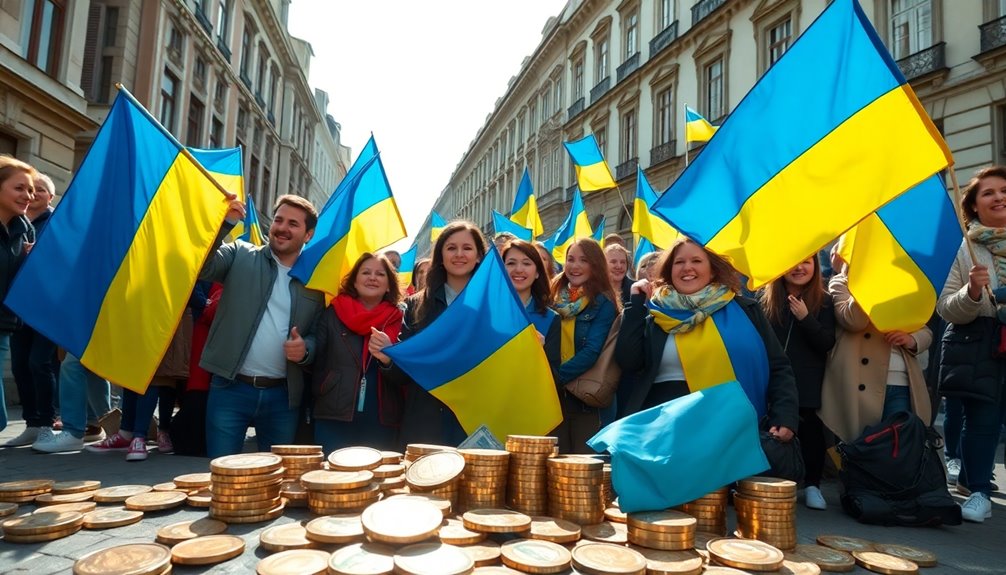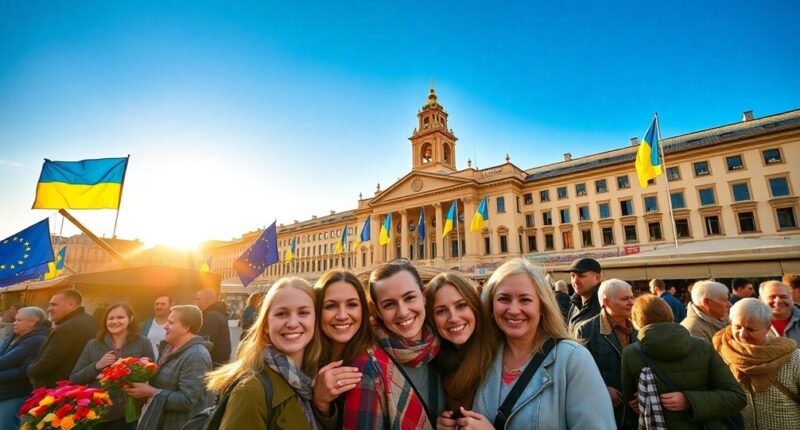You might have noticed that Europe's recent peace initiatives regarding Ukraine have had a noticeable impact on the euro. With investor confidence rising, the currency's strength is reflecting a more stable economic outlook. As the UK and France bolster support for Ukraine, the implications for trade and investment are becoming clearer. But what does this mean for businesses and consumers across Europe? The answer could reshape economic expectations in the coming months.

Europe's ongoing peace initiatives in Ukraine are breathing new life into the euro, enhancing its value amid a backdrop of geopolitical uncertainty. As you watch the situation unfold, you'll notice how the euro's performance directly correlates with developments in Ukraine. When positive news emerges about peace talks or potential resolutions, investor confidence grows, which can significantly strengthen the euro. This is critical for you, especially if you're involved in international trade or investment, as a stronger euro can lead to improved economic conditions across Europe.
Europe's peace initiatives in Ukraine are revitalizing the euro, highlighting its strong connection to geopolitical developments and investor confidence.
The leadership demonstrated by countries like the UK and France in crafting a peace plan is noteworthy. Their efforts aren't just about diplomacy; they signify a larger movement toward European unity. As a coalition forms to support Ukraine, including potential security guarantees, the need for a cohesive European strategy can be seen as a driving force that may bolster investor sentiment. If the U.S. backs these peace efforts, it could further enhance America's trade relations with Europe, creating a more robust economic environment.
You might also consider how improved market sentiment, driven by positive developments in peace negotiations, can create a ripple effect. With the euro gaining strength, European economies could witness increased growth, making investments more attractive. This could lead to a more vibrant economic landscape, benefiting everyone, from businesses to everyday consumers.
While Europe contemplates increasing military aid to Ukraine, it's clear that the continent has a significant economic advantage over Russia. With a GDP much larger than Russia's, Europe has the potential to leverage its resources effectively. This situation demands an overhaul of Europe's defense industry to ensure that support for Ukraine aligns with the ongoing conflict's economic realities. Investing in peace now is seen as more cost-effective than the prolonged consequences of conflict.
However, the path to peace isn't without its challenges. Tensions exist between the U.S. and Europe, complicating the diplomatic landscape. You'll find that NATO plays a crucial role, supporting Ukraine while carefully navigating its relationship with Russia. As Europe moves toward increased defense commitments, some nations hesitate to commit troops, showcasing the divisions that can arise even among allies.
Ultimately, your understanding of these dynamics is essential. Europe's commitment to a long-term security strategy and the ongoing peace drive are pivotal in shaping not only the euro's future but also the broader geopolitical landscape. The cost of peace, in this context, is far less daunting than that of conflict, making these initiatives crucial for a stable and prosperous Europe.









